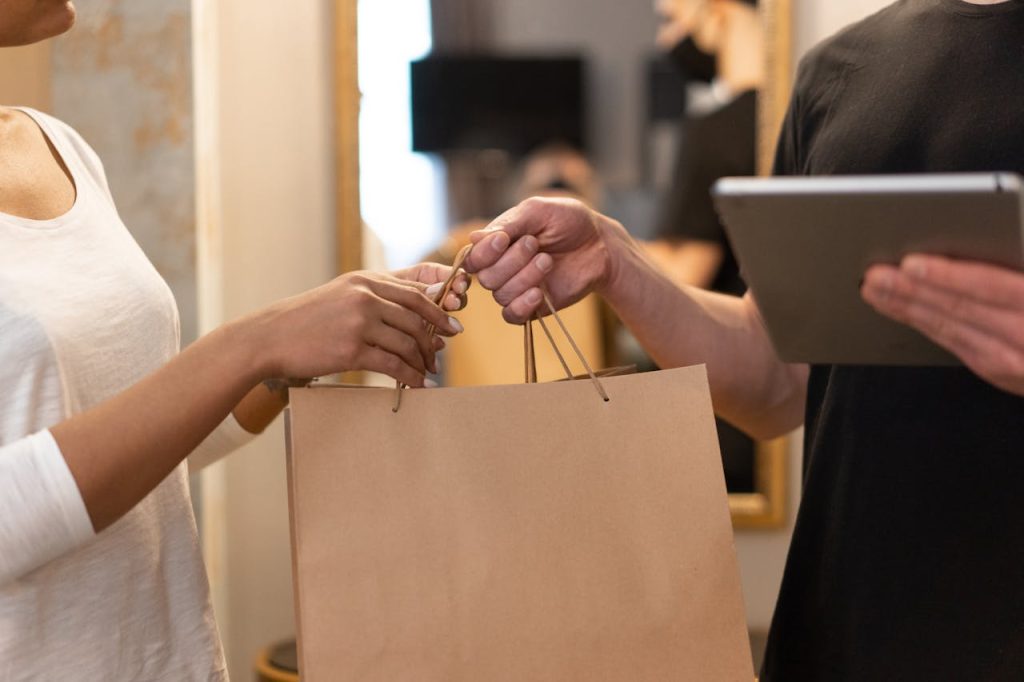
Every time you make a purchase, you leave behind a trail of retail data—sometimes without even realizing it. That little slip of paper or digital receipt you get at checkout is more than just a record of what you bought. It’s a goldmine of information for retailers, who use it to understand your habits, predict your future purchases, and even influence your decisions. In a world where privacy is increasingly difficult to protect, understanding what your receipt reveals can help you make more informed choices about your personal information. Let’s break down exactly what retailers can learn from just one receipt and what you can do about it.
1. Your Shopping Preferences
Retailers analyze every item on your receipt to build a profile of your shopping preferences. Whether you’re buying organic produce, tech gadgets, or budget-friendly brands, each purchase adds a layer to your consumer identity. This retail data helps stores tailor their marketing efforts, sending you coupons or ads for products similar to what you’ve already bought. Over time, these patterns become more accurate, making it easier for retailers to predict what you’ll want next. If you notice that your email inbox is suddenly full of offers for things you recently purchased, your receipt is likely the reason.
2. Your Spending Habits
A single receipt can reveal how much you’re willing to spend on certain products, how often you shop, and even whether you’re a bargain hunter or a splurger. Retailers use this retail data to segment customers into categories, such as “value shoppers” or “premium buyers.” This segmentation allows them to target you with specific promotions or loyalty programs designed to maximize your spending. For example, if your receipts show frequent use of coupons or sale items, you might receive more discount offers in the future. Understanding this can help you recognize when you’re being targeted and make more intentional spending decisions.
3. Your Location and Shopping Times
Receipts often include the store location and the exact time of your purchase. When combined with retail data from loyalty programs or credit card transactions, this information helps retailers map out your shopping routines. They can determine if you prefer shopping on weekends, late at night, or during lunch breaks. This data is valuable for planning store staffing, stocking shelves, and even sending you time-sensitive offers. For instance, if you always shop on Friday evenings, you might get a special deal sent to your phone just before your usual visit.
4. Your Payment Methods
The way you pay—credit card, debit card, mobile wallet, or cash—provides another layer of retail data. Payment methods can indicate your financial habits and even your preferred banks or credit card companies. Retailers may use this information to offer you financing options, exclusive cardholder deals, or to partner with financial institutions for joint promotions. If you consistently use a store-branded credit card, expect to see more targeted offers and rewards aimed at keeping you loyal to that retailer.
5. Your Contact Information
If you use a loyalty program, provide your email for a digital receipt, or enter your phone number at checkout, your contact information is linked directly to your purchase history. This connection allows retailers to build detailed customer profiles and send personalized marketing messages. It also means your retail data can be shared or sold to third parties, increasing your exposure to targeted advertising. To limit this, consider opting out of unnecessary programs or using a separate email address for shopping.
6. Your Return and Exchange Patterns
Receipts track not just what you buy, but also what you return or exchange. Frequent returns can flag you as a “high-risk” customer, which might affect your eligibility for certain promotions or even your ability to make future returns. Retailers use this retail data to identify potential fraud, but it can also impact your shopping experience in subtle ways. If you notice stricter return policies or fewer offers, your return history could be the reason.
7. Your Household Composition
Believe it or not, the items on your receipt can hint at your household size and makeup. Regular purchases of diapers, pet food, or school supplies suggest the presence of children, pets, or students in your home. Retailers use this retail data to send you relevant offers, such as back-to-school sales or pet care promotions. While this can be convenient, it’s also a reminder of how much personal information is inferred from your shopping habits.
Protecting Your Privacy in a Data-Driven World
Understanding how much retail data is collected from a single receipt is the first step toward protecting your privacy. You can take practical steps, like paying with cash, limiting the use of loyalty programs, or requesting paper receipts instead of digital ones. Be mindful of the information you share at checkout and regularly review your privacy settings with retailers. Staying informed empowers you to make choices that align with your comfort level and helps you maintain control over your personal information in an increasingly data-driven world.
What’s the most surprising thing you’ve learned about how your shopping data is used? Share your thoughts in the comments below!
Read More
How Surveillance Technology is Changing the Face of Finance
Consumerism on a Budget: Why Americans Proudly Use and Love Coupons
The post What Retailers Know About You Based on Just One Receipt appeared first on The Free Financial Advisor.







